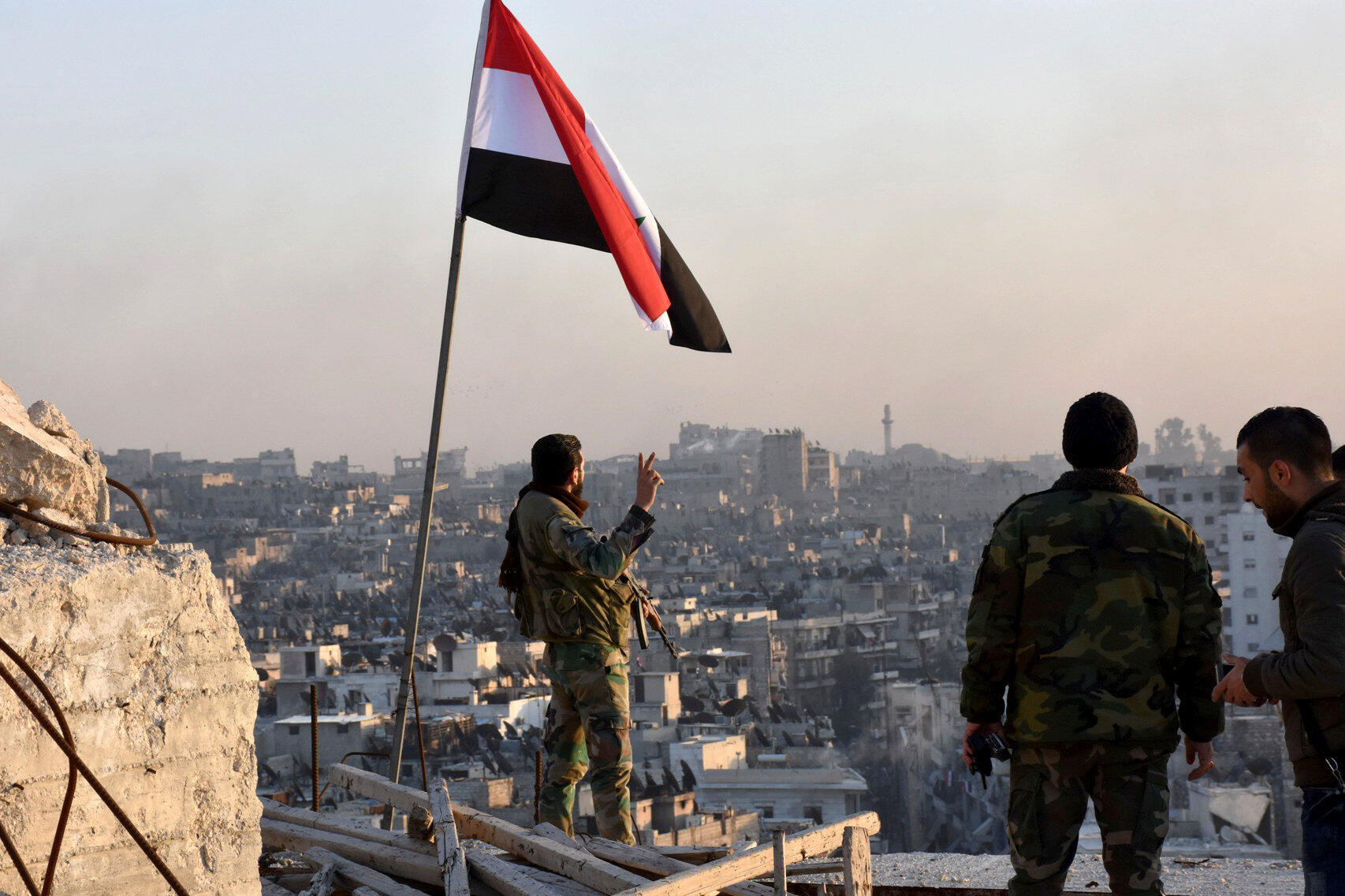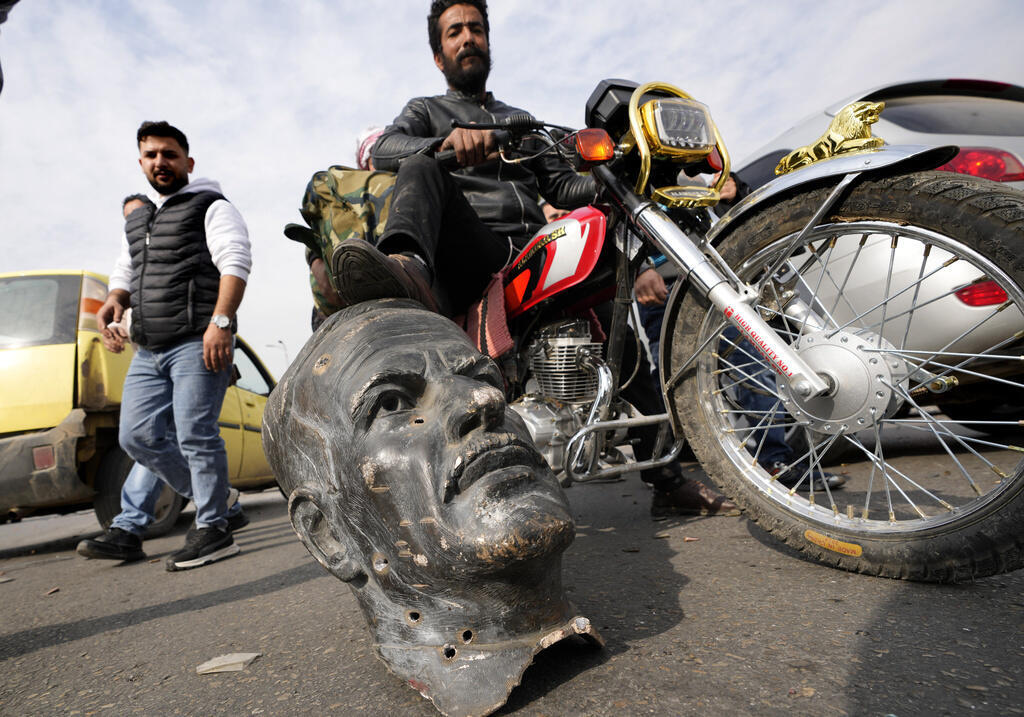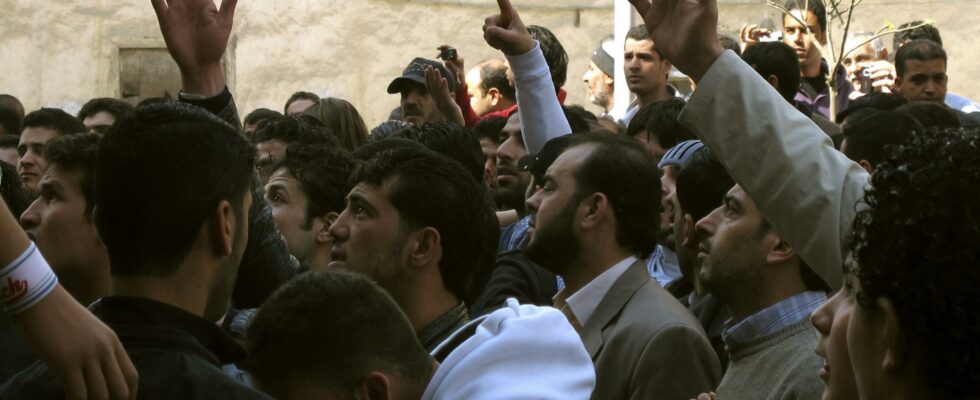From the popular uprising in Deraa in 2011 to the fall of the Assad regime on December 8, 2024, Syria has experienced 13 years of a particularly deadly war. A look back at the key dates of this bloody conflict which continues to have repercussions throughout the Middle East region.
From our correspondent in Beirut
The war in Syria is the longest conflict of the 20th century and one of the bloodiest. Some 500,000 dead, more than a million injured, six million refugees and as many internally displaced people… Half of the Syrian population was physically affected by this conflict which ended on December 8 with the fall of Bashar al-Assad. The geopolitical issues of this crisis provoked the direct intervention of the Russian, Turkish, American, Iranian and Israeli armies, as well as extra-state actors of several dozen nationalities. RFI offers you a reading key through twelve dates to better understand the events.
The first demonstration against the Syrian regime broke out in Daraa, in the south of the country, a historic stronghold of the Baath party in power since 1963 in Syria. The protest movement was sparked by the arrest and torture of around fifteen teenagers accused of having written graffiti hostile to President Bashar al-Assad on a wall.
The neglect of rural areas by those in power and the agricultural crisis, aggravated by years of drought, amplify the population’s resentment. As the days go by, the protest becomes politicized and the demonstrators put forward a series of demands of a social and political nature. Towards the end of the month, the first slogans calling for “ fall of the regime » appear. Despite the repression of the security forces, the protest is hardening and spreading to other regions of Syria.
One hundred and twenty Syrian police officers and soldiers are killed by armed insurgents in the town of Jisr al-Choughour, bordering Turkey, in the northwest of the country. Western and Arab ambassadors stationed in Damascus were brought by the Syrian authorities to the scene of the ambush to observe the facts. This attack marks the beginning of the militarization of the Syrian revolt after two months of demonstrations in most of the country’s cities, repressed by the police.
The Free Syrian Army (FSA), made up of dissidents from the regular army and Islamist brigades, created a year earlier in Turkey, launched the battle for Damascus. The insurgents take control of eastern Ghouta and much of the countryside south and north of the capital. The government maintains control of Damascus and areas leading to the Masnaa border post with Lebanon. The momentum of the rebel offensive is shifting towards Aleppo. Neighborhoods to the east of Syria’s second city and economic capital are falling into the hands of opposition groups. The Syrian crisis has turned into a civil war.
The leader of Lebanese Hezbollah Hassan Nasrallah officially recognizes the participation of his fighters in the war alongside the Syrian army. This engagement allowed the regular troops to record, six weeks later, their first victory after a series of setbacks throughout the country. On June 5, government troops, supported by Hezbollah fighters, took the town of Qoussair, bordering Lebanon, in the province of Homs. This date marks the regionalization of the Syrian conflict with the entry into play of external actors.
Fourteen hundred civilians die in a double sarin gas attack which targeted two regions of eastern Ghouta of Damascus, held by rebels. The opposition accuses regime forces of being behind this massacre. Damascus denies any responsibility. This chemical attack comes shortly after US President Barack Obama announced that the use of this type of weapon was a “ red line » which, if crossed, would provoke an American response. But instead of a military response, the United States and Russia agree to dismantle Syria’s chemical arsenal, under the supervision of United Nations experts.
Jihadists from the Islamic State of Iraq and the Levant (ISIL) group, ancestor of the Islamic State (IS) group, founded by Abu Bakr al-Baghdadi, take the city of Raqqa, in the north, which had fallen a few months earlier into the hands of local rebels. This city is declared the provisional capital of the “Caliphate” proclaimed by ISIS. The organization managed to control a fifth of Syrian territory and a quarter of Iraq, before being defeated by an international coalition led by the United States and by the Syrian army supported by Russian forces to retake the city in particular. of Palmyra.
In the name of the “ fight against terrorists », Russia, a long-time ally of Syria, announces to everyone’s surprise its direct military participation in the war alongside the Syrian army. Dozens of Sukhoi take off from the Hmeimim air base, made available to the Russian army by the Syrian authorities, in the province of Latakia. Russia’s intervention will allow the very weakened regime to gradually regain control of two-thirds of the territory. The most important victory being the reconquest of Aleppo in December 2016.

The argument of “ fight against terrorism » was taken up a year later by Turkey to justify the entry of its army into Syria. The “Euphrates Shield” operation in the province of Aleppo targets two groups: ISIS and the Kurdish YPG militias, allies of Washington. The Turkish army will expand its deployment to the neighboring province of Idlib, which has become the last bastion of Islamists and rebels driven from other regions of Syria.
The Syrian Democratic Forces (SDF), dominated by the Kurds and supported by the West, take control of the town of Baghouz, in eastern Syria, the last bastion of ISIS. This conquest sealed the dismantling of the self-proclaimed caliphate of Abu Bakr al-Baghdadi. The Islamic State group lost its Syrian capital, Raqqa, in October 2017, after a months-long battle with American-backed Kurdish forces.
Entry into force of the Caesar Act, signed a few months earlier by American President Donald Trump. This very severe text prohibits virtually any financial and economic transaction with Syria. It will have the effect of impoverishing the population and ruining the Syrian state by drying up its sources of financing. Caesar is the pseudonym of a Syrian whistleblower who leaked thousands of photos of prisoners being tortured in government prisons.
A 7.8-degree earthquake devastates the region, killing 50,000 people in Türkiye and 6,000 people in Syria. In Syria, the disaster is aggravated by American and Western sanctions which have strongly affected the hospital and relief sectors. Thanks to this disaster, several Arab countries renewed contact with President Bashar al-Assad, who broke his political isolation. Damascus will be authorized to resume its seat within the Arab League and Bashar al-Assad will be invited to the Arab summit in Riyadh on May 18.
A plane takes off at dawn from Damascus airport with Bashar al-Assad and his family on board. After 25 years in power, including 13 years of civil war, the Syrian president has just been overthrown following a lightning offensive of rebel coalition motley part of Idlib, November 27. Russia announced the next day that it had granted asylum to the deposed president and his family for “ humanitarian reasons “. The speed of the regime’s fall surprises the whole world. The Syrian army, weakened by 13 years of war and by Western sanctions, demoralized, demotivated, has given up defending the regime. The rebels enter Damascus without really fighting.

Also readInternal and geopolitical consequences of the fall of Bashar al-Assad in Syria
